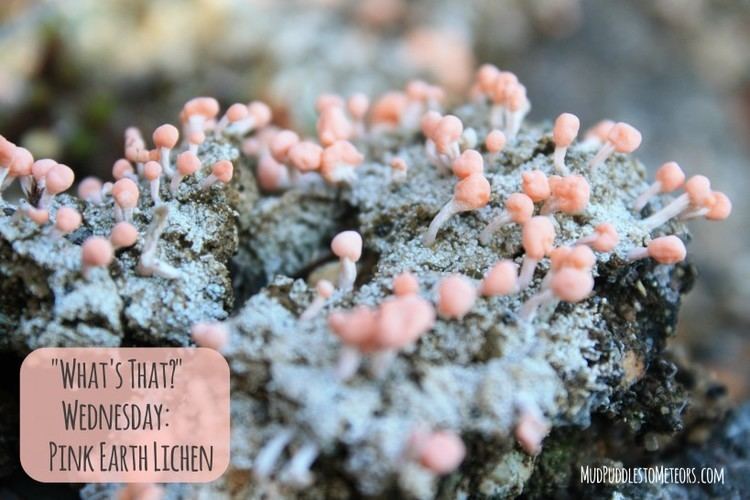Have you ever stumbled upon a vibrant pink patch while hiking in the woods, only to wonder about its origins? If so, you might have encountered the fascinating Dibaeis baeomyces, commonly known as the pink earth lichen. For nature enthusiasts, Instagram influencers, and adventurers alike, this enchanting organism presents a compelling subject for exploration. But, what is this pink marvel, and why should you, a member of the younger generation, care about it? Let’s dive deep into the extraordinary world of Dibaeis baeomyces.
The allure of Dibaeis baeomyces begins with its striking appearance. This lichen boasts a vividly pink hue—a standout feature that sets it apart from the predominantly green and brown landscape often found in forests and parks. Its vibrant color can magnetize the attention of anyone passing by, and Instagram-ready moments abound where this unique lichen pops against more muted backgrounds. Young adventurers trekking through remote areas can capture stunning photographs, adding a splash of color to their feeds while also raising awareness about the lesser-known wonders of nature.
But what exactly is a lichen? It is essential to understand that lichens are not just one organism; they represent a symbiotic relationship between fungi and algae or cyanobacteria. In this mutualistic partnership, the fungal component—typically a mold—provides structure and protection. In contrast, the photosynthetic partner produces food for both organisms through photosynthesis. This harmonious duo allows lichens to thrive in a variety of climates, from arid deserts to damp forests.
Within its unique ecological niche, Dibaeis baeomyces showcases intriguing adaptations that set it apart. Most prominently, this lichen is often found in habitats enriched with decaying organic matter, such as sandy soils or burned areas. Its ability to colonize disturbed environments highlights its resilience and ingenuity in survival. Furthermore, its pigmentation serves a dual purpose—acting as a natural sunscreen to shield the organism from UV radiation while also attracting attention due to its unmistakable hue.
Engaging with Dibaeis baeomyces extends beyond mere aesthetics—it opens up doors to understanding broader ecological principles. Each lichen is an indicator of environmental health, highlighting changes in air quality and climate. Young environmental advocates can become the eyes and ears of eco-awareness by documenting lichen populations in their local areas. Apps such as iNaturalist encourage the sharing of biodiversity observations, uniting a community of young nature-lovers who can contribute to research initiatives and conservation efforts merely by acknowledging what occurs beneath their feet.
Moreover, lichens like Dibaeis baeomyces serve as essential components of their ecosystems. They contribute to soil formation by breaking down hard minerals and rock surfaces as they colonize, introducing organic matter into the environment. This process paves the way for new plant life to flourish, forming a crucial part of a larger ecological tapestry. Young people can learn how their actions—no matter how seemingly insignificant—have far-reaching implications for nature. By fostering a relationship with organisms like Dibaeis baeomyces, individuals can grasp the interconnectedness of life and their responsibilities as stewards of the environment.
Curiosity about Dibaeis baeomyces can lead to myriad activities for young people interested in biology and ecology. A crafty nature exploration outing could involve scavenger hunts to locate various types of lichens, getting a closer look at the different ecosystems where they thrive. Workshops, lectures, and classes focused on identification and preservation of fungal species can expose youth to the intricacies of biological sciences, inspiring the next generation of environmental scientists.
As society progresses and technology advances, understanding natural organisms often takes a back seat. Yet, embracing biodiversity promotes a sustainable and symbiotic future. Daily interactions with nature, such as observing the lichen you pass on your way to school or while on weekend adventures, forge a personal connection. Young explorers can transform a simple hike into a nondescript journey into nature’s wonderland, capturing the essence of travel and exploration. The more youth engage with their surroundings, the more they can appreciate the value of organisms like Dibaeis baeomyces—the pink earth lichen that enriches our planet.
So, the next time you spot a patch of Dibaeis baeomyces, take a moment to pause. Reflect on its significance, snap a memorable photo, and share your experience. Each encounter can remind us of the stunning diversity that exists right beneath our feet. In conclusion, by delving into the study of lichen, *you* not only enhance your understanding of biological phenomena but also cultivate a passion for preservation that can resonate across generations. Join the movement to appreciate and protect the pink treasures of the Earth. You never know; your fascination might kindle a spark of interest in others, creating ripples of change in how we perceive and protect our natural world.









Leave a Comment